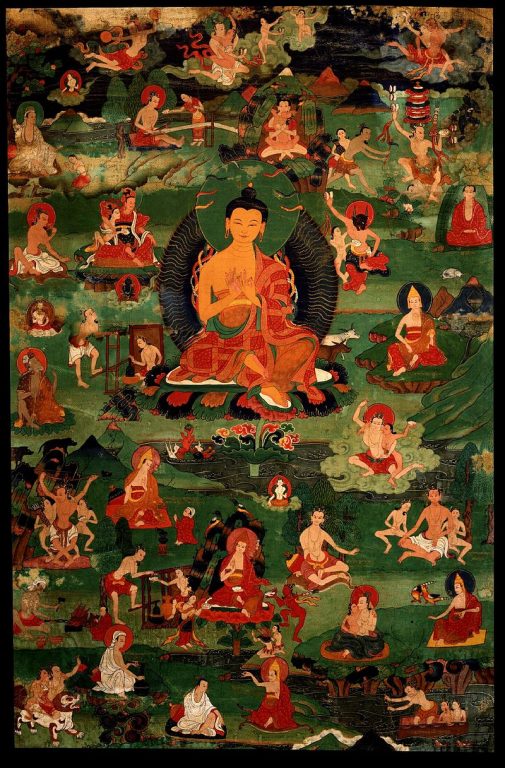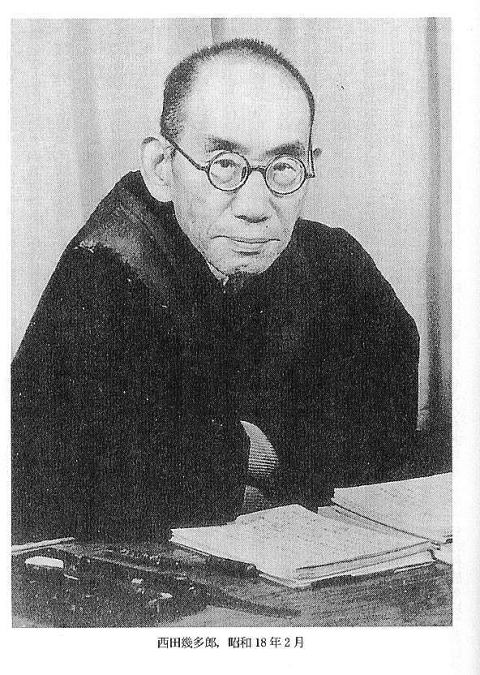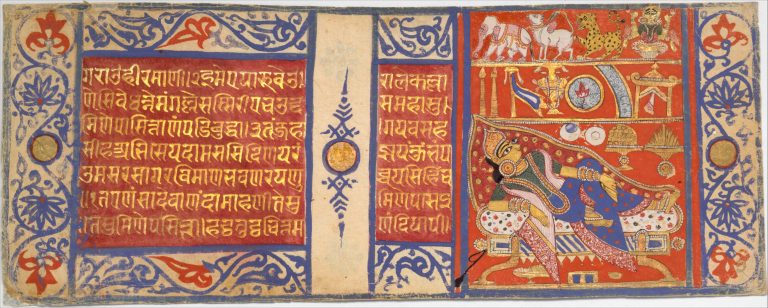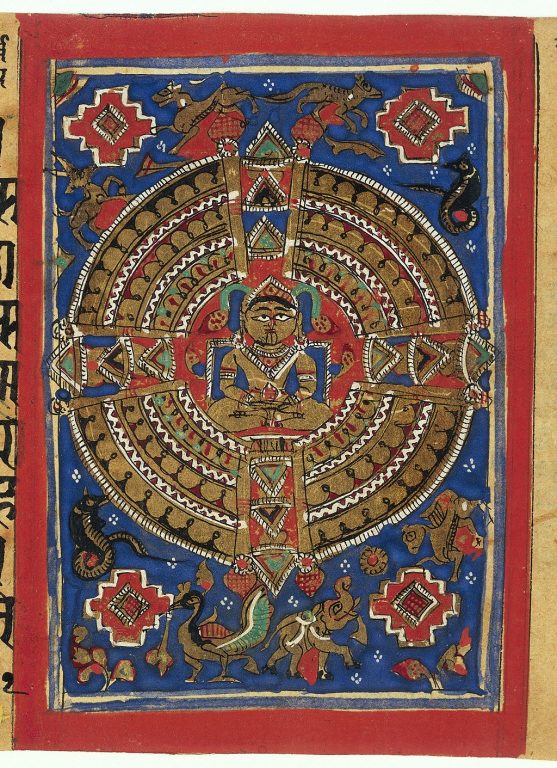
Book of Mozi, 7th volume, 7th century
1. Mohism
In fifth century bce China the philosopher Mozi argued that ‘the business of a benevolent person is to promote what is beneficial to the world and eliminate what is harmful.’ This is remarkably similar to the utilitarian principle formulated by John Stuart Mill in the eighteenth century: ‘Actions are right in proportion as they tend to promote happiness, wrong as they tend to produce the reverse of happiness.’
Mohism is more austere than utilitarianism, in that it considers pleasure too frivolous to count as something which is beneficial to society. Mozi doesn’t even see a point in musical performances, at least not those that ‘divert such vast resources that could be used to produce food and clothing for the people.’ Very similar arguments are heard today by those who object to state subsidies for the arts when health and education services are in such dire need.
Mohism is perhaps most noteworthy for its unequivocal commitment to absolute impartiality. ‘It is those who are partial in their dealings with others who are the real cause of all the great harms in the world,’ said Mozi. ‘Impartiality gives rise to all the great benefits in the world and partiality gives rise to all the great harms in the world.’ And most pithily: ‘Replace partiality with impartiality.’

D. Cunego, Portrait of Averroes after Raphael’s ‘School of Athens’ fresco, 1785
2. Falsafa
In what is often called the golden age of Islamic philosophy, from the eighth to the thirteenth century, philosophers translated and commented on Ancient Greek classics, developing their own distinctive ideas out of this cross-cultural interaction. The greatest of these, Ibn Sīnā (Avicenna) and Ibn Rushd (Averroes), put paid to the modern lie that real philosophers cannot emerge out of the theological straitjacket of Islam.
Ibn Rushd’s classic The Decisive Treatise meticulously argues that Islamic law actually makes philosophic studies obligatory for those educated enough to pursue it. It commends ‘demonstrative truth’, meaning reasoning based on logic and evidence, arguing that it cannot conflict with scriptural truth. If it appears to do so, that means that the scripture must be interpreted metaphorically. ‘All Muslims accept the principle of allegorical interpretation,’ he wrote, ‘they only disagree about the extent of its application.’
More knowledge of the falsafa would allow Muslims and non-Muslims alike to understand that there is a distinctively Islamic path to non-dogmatic philosophy, one which doesn’t follow the secular model of the European enlightenment but which remains firmly rooted in religion.

Nagarjuna with Thirty of the Eighty-four Mahasiddhas, 18th century
3. Madhyamaka
The second-to-third-century Indian philosopher Nāgārjuna did more than anyone before him to make Buddhism not just a religion but a philosophy. He is most noted for his development of the concept of dependent origination, an idea that is central to all Buddhist thought. The essence of dependent origination is that ‘all phenomena are devoid of inherent existence and are empty’. ‘Inherent existence’ here means a kind of existence which does not depend on anything else. Anything which exists inherently for Nāgārjuna would need to have a permanent, unchanging existence. ‘If actions were to have inherent existence then they would not be impermanent, but would have the nature of permanence.’
Once defined in this way, it is quite easy for Nāgārjuna to show that nothing has this kind of perfect autonomy. ‘Time’, for example, ‘does not exist inherently because the three periods of time [past, present and future] do not maintain continuity by themselves but are dependent on each other.’ Everything, including the self, is like this: dependent on other things for its own existence. This ‘being dependent nature’ of existing things Nāgārjuna calls ‘emptiness’.

Kitaro Nishida, 1943
4. The Kyoto School
The Kyoto School is the name given to a number of philosophers who never formally formed a group but shared a geographical and philosophical proximity to the early-twentieth-century Japanese philosopher Kitarō Nishida. The school engaged with Zen, Shintō and Western philosophies, developing distinctive ideas about the self and society. At the heart their philosophy was nothing, or rather ideas of nothingness (mu) and emptiness (ku) which have been central to East Asian thought before even Nāgārjuna.
To say reality or the self is empty is not to say that it does not exist. It simply means that it lacks a discrete essence, something that makes it what it is independent of what makes other things what they are. This is most evident when it comes to the self. To be an individual is to be in relation to others. There is no self independent of other selves.
Tetsurō Watsuji used one of the Japanese words for a person, ningen, to illustrate this. The word is made up of nin, meaning ‘human’ or ‘person’, and gen, meaning ‘space’ or ‘between’. Ningen are hence both individuals and interdependent, essentially defined by their relations to others. At a time when we are questioning whether individualism has gone too far in the West, such an understanding of the self is especially timely.

Sanskrit Manuscript
5. Nyāya
Because so much Indian philosophy is intimately linked with what we think of as religion, it is often dismissed as fundamentally unphilosophical. Even a cursory knowledge of the Nyāya would erase that prejudice.
Supposedly written by Akṣapāda Gautama between the sixth and second centuries bce, the Nyāya Sūtra is a remarkably rich, detailed account of the forms of reasoning and their validity. As well as presenting an analysis of logical inference which is the equal of Aristotelian syllogisms, it has a taxonomy of the different kinds of dispute with a wonderful lexicon. Whereas discussion is a sincere form of investigation, wrangling simply aims at gaining victory, ‘by quibbles, futilities, and other processes that deserve rebuke’. Wrangling also comes in various forms. Cavil, for instance, ‘is a kind of wrangling that consists in mere attacks on the opposite side. A caviller does not endeavour to establish anything, but confines himself to mere carping at the arguments of his opponent.’ We all know the sort.
The tenth-century-Nyāya logician Udayana even set out an exact analogue of the Law of Excluded Middle, a cornerstone of Western logic: ‘Between a thing and its contradictory, there is no third way. And there cannot be also a unity of two contradictories, for the mere statements of them will cancel each other.’

Charles Sanders Peirce, 1870
6. Pragmatism
The parochialism of the Western intellectual goes far deeper than wilful ignorance of non-Western traditions. Even within the West, disciplinary subdivisions leave many major schools outside of the canon. One clear example of this is pragmatism, central to any syllabus of modern philosophy in the United States but widely ignored in Britain.
Pragmatism’s core idea is that the the truth and meaning of any statement is no more than a function of its practical pay-off. Charles Sanders Peirce defined the central principle of pragmatism as: ‘Consider what effects, that might conceivably have practical bearings, we conceive of our conception to have. Then our conception of these effects is the whole of our conception of the object.’
Pragmatism is not only philosophically rich, it also offers some kind of insight into the American mentality. For instance, a senior aide to George W. Bush once dismissed what he called ‘the reality-based community’, insisting that ‘We’re an empire now, and when we act, we create our own reality. And while you’re studying that reality – judiciously, as you will – we’ll act again, creating other new realities, which you can study too, and that’s how things will sort out.’ Peirce, John Dewey and William James would have shuddered at this and it certainly is not academic pragmatism in action. But it is a way of thinking that comes out of the same basic American mentality, the bastard child of a much wiser philosophy.

Konstantin Makovsky, Peasant Dinner During Harvesting, 1871
7. Modern Russian Philosophy
Russian philosophy has self-consciously stood as a kind of a bridge between Europe and Asia while not belonging to either. It rejects the centrality of the individual, rational mind in Western philosophy as a kind of hubris, arguing it does not have the resources to reach ultimate truth.
The place of rationality in the Cartesian system was taken in Russian philosophy by intuition. Truth is not so much understood as felt. At the same time the place of the individual was taken by the collective. Russia embraced the myth of the obshchina, a peaceful, harmonious peasant community of souls that was wilfully naive so as to avoid the corrupting atheism, competition and individualism that Western rationality had unleashed.
Russian philosophy also seems unconcerned with traditional notions of truth. Even the Russian language helps maintain the elasticity of truth, for which it has two words. Istina is natural truth, the truth of the universe and is immutable. Pravda, in contrast, describes the human world and is a human construction.
A permissive attitude to truth, a rejection of decadent Western values, a sense of national exceptionalism, the unimportance of the individual compared to the collective destiny: the connections between these ideas and the actions of Russian political leaders of all stripes is plain to see.

Ethiopian parchment scroll with Amharic/Ge’ez script
8. African Philosophy
It seems extraordinary that a whole continent’s philosophy has been almost entirely neglected by the rest of the world, but that is the case with Africa. The main reason, other than pure prejudice, is that with few exceptions, such as the works of the seventeenth-century Ethiopian Zera Yacob, African philosophy has been transmitted orally and belongs to peoples rather than named philosophers.
In recent decades, however, more people have taken seriously the possibility that these oral teachings contain real philosophy rather than mere ‘folk wisdom’. Ethnophilosophers have made explicit philosophical principles that are implicit in practices and languages. The Kenyan Henry Odera Oruka was critical of this, arguing that true philosophy requires original, critical thinking. He found this in ‘sages’, elders who were respected as teachers but who demonstrated in interviews with Oruka that they developed the ideas of their cultures critically, not slavishly.
The academic study of African philosophy has been growing in recent decades. It is surely only a matter of time before it becomes better known.

Folio from a Kalpasutra Manuscript, ca. 1465
9. Cārvāka
The cliché of India as an inherently and exclusively spiritual nation is challenged by one of the major dissenting schools of the subcontinent’s philosophy. Cārvāka is rigorously materialistic, rejecting the idea accepted by every other school that the ultimate goal of life is mokṣa, liberation from the cycle of rebirth. It asserts instead that the only purpose of life is pleasure, and that with the death of the body follows the death of the self.
Cārvāka has no time for the testimonies of seers (ṛṣis), claiming that the only valid source of knowledge is sense perception. It not only rejects the claim that the ancient sacred texts, the Vedas, contain revealed truths, it mocked their authors as ‘buffoons, knaves, and demons’.
The fourteenth-century Cārvāka thinker Mādhavācarya articulated a problem that has also been central in Western philosophy. Our knowledge of how the world works requires us to generalise from particular experiences to general rules, such as ‘wherever there is smoke, there is fire’. But we only ever observe particular instances, never general rules so rationally speaking our generalisation in ungrounded, as his very choice of example helps suggest. No one with any knowledge of arguments such as this could dismiss Indian philosophy on the basis that it is not philosophy as we know it.

Miniature showing Mahavira, founder of the Jain religion, 1503
10. Jainism
One of the most distinctive features of Jain philosophy is its doctrine of anekāntavāda, which asserts that ultimate truth always has a multidimensional character. This is often illustrated by a parable adopted and adapted from the Udāna, part of the Buddhist Pali Canon.
A number of blind men are led to an elephant. Those who felt the elephant’s ear proclaimed the beast to be ‘just like a winnowing basket’, those who felt the tusk said it was ‘just like plowshare’, those who touched the trunk concluded it was ‘just like the pole of a plow’, those who had been shown the tuft at the end of the elephant’s tail said it was ‘is just like a broom’ and so on. Each has one aspect of the truth but it requires bringing all their perspectives together to see the whole truth.
Connected to this doctrine is the Saptabhangivada, a unique seven-valued system of logic which allows sentences to be true, false, non-assertible, true and false, true and non-assertible, false and non-assertible, or true, false and non-assertible.
We don’t need to go the whole way with Jainism to accept that different philosophical traditions of the world may each have stumbled upon parts of the truth, but none have discovered all of it. The most complete picture we can form therefore requires us to attend to them all and create something like a cubist painting, which combines perspectives that could not all be seen from one point of view on the same canvas.
Feature artwork by Hanabusa Itchō, Blind monks examining an elephant
Photograph of Kitaro Nishida © Wikimedia, 1943






